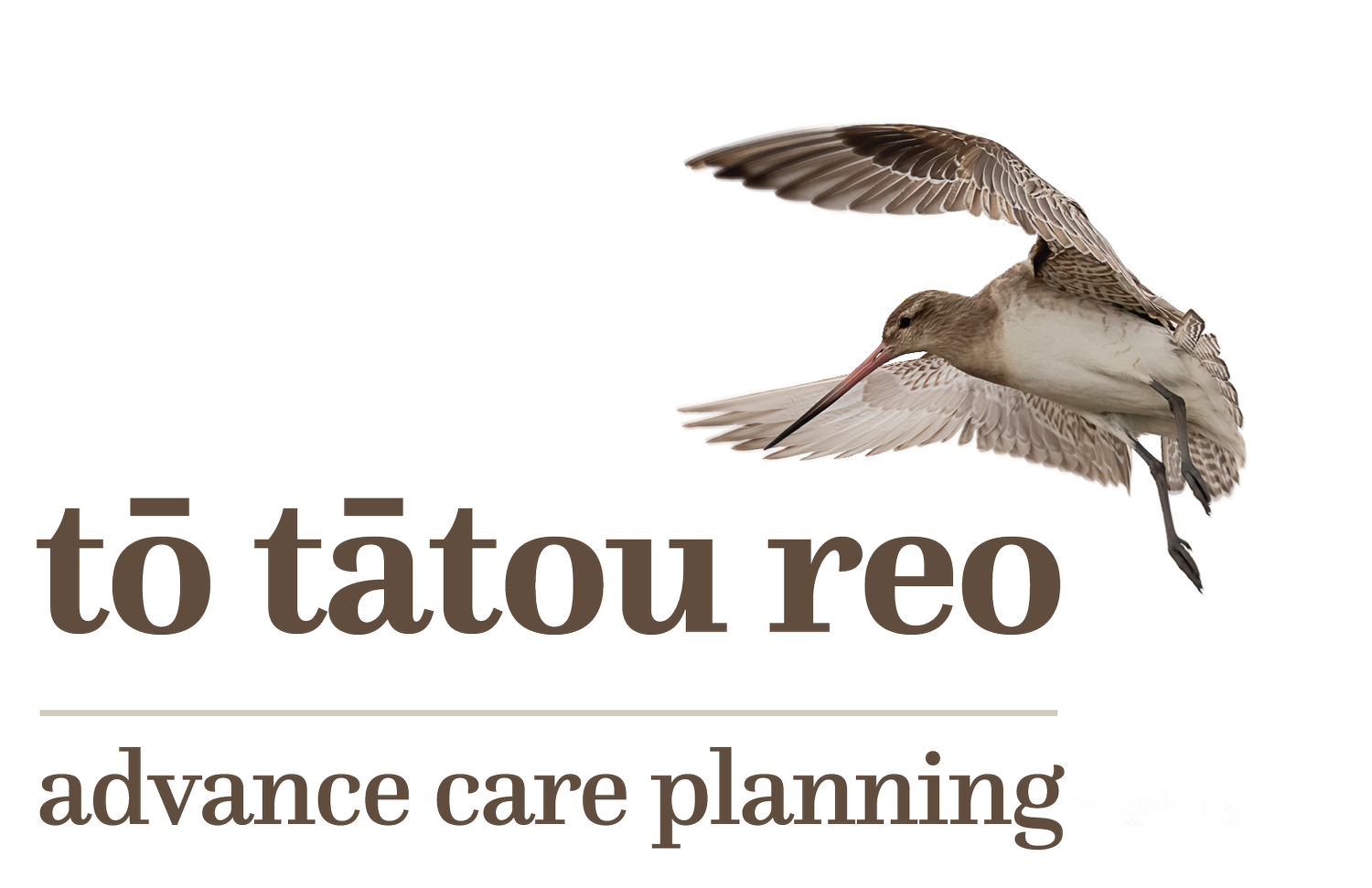
Our story
The advance care planning story is reflected in several interconnected elements: a whakatauākī (proverb), a tohu (the proverb’s visual expression), the image of the kuaka bird, and our te reo Māori name - Tō tātou Reo.
The strong Māori elements in our story and visuals came from the process of developing Whenua ki te whenua, an advance care planning guide for whānau Māori. Our testing showed a wide cross section of New Zealanders could relate to this resource, so we have extended it across all our work, showing this thinking is clearly grounded in Aotearoa. This page shares the story of these elements and shows how they link together.
Our te reo Māori name
Our te reo Māori name Tō tātou Reo succinctly expresses how advance care planning brings the voice of patients and their whānau to the centre of health care decision making – Tō tātou Reo | Our voice
Whakatauākī
E hono ana tātau ki te whenua mai i te matihe
o te ora tuatahi tae noa ki te whakamutunga.
E kawea ana te wairua i roto i te puku o te hau
ki te okiokinga o ngā tīpuna.
-
We are connected to the land
from the first breath of life to the last.
Our spirit is carried within the belly of the wind
to the resting place of the ancestors.
Len Hetet (Ngāti Tūwharetoa, Ngāti Maniapoto, Te Ātiawa, Ngāti Apa) wrote this whakatauākī and created the tohu (design), for use by the advance care planning programme.
The whakatauākī is about the journey of life.
Wairuatanga (spirituality) is expressed through the beauty of the words, the recognition of both the physical and spiritual worlds and the connection of people and place.
The whakatauākī is about knowing where you come from and who you are. It reflects the advance care planning our core values of respect and acceptance of the whakapapa me te tuakiritanga (genealogy and identity), of every New Zealander.
The whakatauākī encapsulates how the process of advance care planning encourages and values people’s full expression of their mana (prestige, authority), whakapapa, ancestry, and identity.
Tohu
Our tohu (see below) is a visual expression of the whakatauākī.
At the centre of the tohu sits the person with their whānau (family, including extended family and friends). The whānau are represented by the haehae lines that connect and interact across the expanse of the tohu. The haehae represent those people who provide care and support and help us to learn and understand life.
Pito
The long flowing patterns in the tohu depict the pito (umbilical cord). The pito is what connects us to the physical and spiritual world and symbolises the interconnection of the physical being and its spiritual embodiment.
Advance care planning combines spiritual, cultural, and practical processes to guide and strengthen whānau across the generations. This aspect is reflective of another of our core values that is centred around holistic multi-generational guardianship, or kaitiakitanga, to keep whānau safe by preparing for the future.
Koru
The koru (spiral patten) in the tohu represents the winds that carry us through life, portraying the many journeys the wairua (spirit) undergoes during its lifetime.
Haehae
Haehae - the three lines that form the haehae represent the helping hands whānau, and the foundational questions of whanaungatanga (connection).
Ko wai koe? Who are you?
No hea koe? Where are you from?
Kei te pēhea koe? How are you?
The multiple haehae give mana to the role of the community and whānau who provide support across a lifetime. They are reflective of our core value that encourages person-and whānau-centred care, kotahitanga (unity through consensus) and the importance of shared decision-making that enhances mana and supports oranga, the well-being of all people.
The kuaka
Kuaka – is the Māori word for the bar-tailed godwit bird.
Ancestral stories from some northern iwi speak of how the kuaka accompanies the spirits of the departed back to Hawaiki (ancient homeland, and the final resting place of wairua).
E ai ki te kōrero, ka hoki tahi atu te kuaka me ngā wairua ki Hawaiki.
There are other iwi that associate the kuaka with new beginnings as they travel the world and land on the Aotearoa New Zealand coastlines in the spring.
Although iwi have differing experiences, thoughts and pūrākau (stories) about the kuaka, they all weave together to tell the story of advance care planning – the journey of life.



